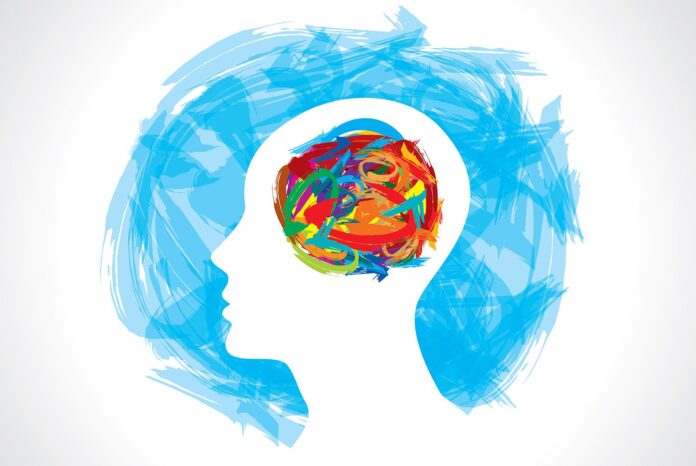CULLMAN, Ala. – May is Mental Health Awareness Month. With millions of Americans fighting mental illness publicly or suffering in silence, the fight to end the antiquated stigma associated with the disease is still necessary since the awareness month’s inception in 1949.
The National Alliance on Mental Illness (NAMI) defines mental illness as “a condition that affects a person’s thinking, feeling, behavior or mood. These conditions deeply impact day-to-day living and may also affect the ability to relate to others.”
Mental illness disorders include mood disorders such as depression and bipolar disorder, formerly known as manic depressive disorder. There are also personality disorders including obsessive-compulsive disorder, borderline personality disorder and paranoid personality disorders. Anxiety disorders, substance use disorders and post-traumatic stress syndrome are also mental illnesses.
Mental illness is unfortunately common. In the United States 21% of adults experienced mental illness in 2020. That accounts for over 52.9 million American adults or 1/5 of the population.
Over 16% of U.S. children or 7.7 million youth under the age of 18 experienced a mental health illness.
Cullman Licensed Professional Counselor Annette King spoke to the prevalence of mental illness and the danger surrounding its stigma.
“Mental illness affects everyone. I cannot underestimate the need for everyone to be aware of the damage that can occur in untreated mental illness. The stigma around mental health gravely hinders those who suffer from mental illness. People fear the diagnosis, that the label of such behavior will somehow mark them as supposedly broken or crazy.
She continued, “Diagnosis is simply a way of collapsing the behaviors and/or thought patterns into one category. If you have runny eyes, a stopped-up nose, sneezing and coughing, we can say you have a cold. It’s that simple and nothing more. We now have a name and a treatment modality for a condition that is not your fault. It is the obsessive way that we try to cover up ‘quirks’ that lead to very ineffective ways of dealing with our world.”
Despite the millions of Americans with mental illness, only 46% of adults and 50% of youth receive treatment. Astonishingly, the average time from the onsite of symptoms until the seeking of treatment is over 10 years. During that lapse, profound damage can be done to the sufferer’s mind and body.
Those with depression see a 40% higher than average risk of cardiovascular and metabolic diseases. High schoolers with significant depression are twice as likely to leave school and younger students are three times more likely to repeat a grade than their counterparts.
King shares, “We know that long-term, untreated depression can cause significant brain damage. It can leave the brain inhibiting the production and release of serotonin and dopamine. With proper treatment, we can start to reverse the damage to the brain.
“People from all walks of life are affected by mental illness. Often it starts with someone seeking help for a child that is struggling at school. When the children are brought to therapy, the parent often identifies with the behavior patterns discussed by the therapist. This hopefully leads to family therapy.”
Looking at the nature versus nurture origins of mental illness, King says, “Mental illness impacts families significantly. Where there is the presence of mental illness in a family, every member can be affected. Often, the person with a diagnosable illness has learned ineffective patterns of behavior from someone else in the family. There is also the genetic link of some mental health disorders. Neither of these factors are the fault of the individual diagnosed with a mental illness.”
The economic impact of mental health is also of note. Mental illness sufferers have a higher unemployment rate than the general population.
“Untreated mental illness effects our economy by the loss of the ability to work effectively causing many to seek disability coverage. It causes a decrease an individual’s ability to function in their work settings. It decreases the effectiveness of family members in their work settings by making their days unpredictable and often interrupted by the actions and behaviors of the individual with mental illness,” King explained.
Luckily, treatment is available to those of all ages with mental illness.
Medication can manage symptoms with or without psychotherapy where coping skills and emotion regulation are taught.
Cognitive Behavioral Therapy (CBT) is a common treatment modality used by mental health professionals.
Speaking of CBT’s benefits, King says, “In CBT, mental health professionals seek to uncover destructive thought patterns that lead to ineffective and negative behaviors. These behaviors perpetuate the dysregulation of interpersonal patterns in the workplace, in the family, in friendships or at school.
“As therapy progresses, clients learn new sets of behaviors that can significantly change the relational patterns that could have been present for generations. Basically, CBT teaches clients to organize their thoughts and truths and to understand their actions and the actions of others. Hopefully this leads to a change in behavior.
“Most sufferers believe that theirs is a unique experience. With an open dialogue, we start to see mental illness as somewhat ordinary, no different than the common cold.”
If you or someone you know is in a mental health crisis, please call 1-800-273-8255 (TALK).
Copyright 2021 Humble Roots, LLC. All Rights Reserved.


















